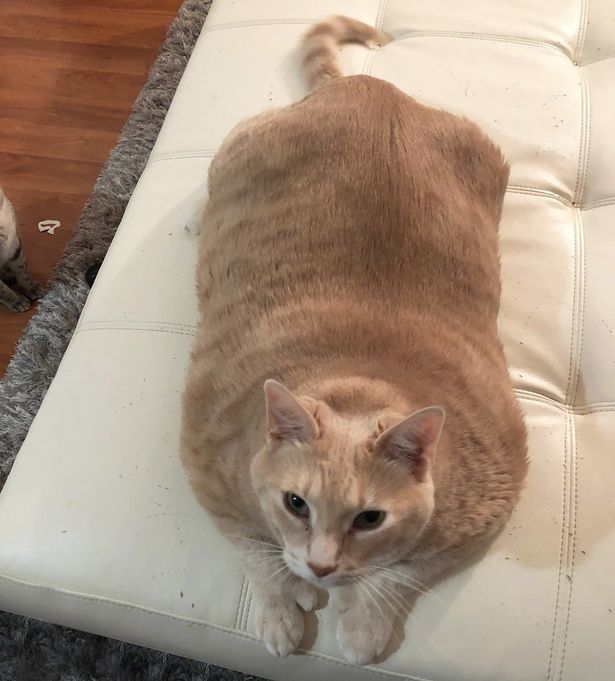Sadly there is an increasing number of Obesity within cats. With a current estimate of 59% of cats being obese, it is now more important than ever to not fall for their ‘’feed me again meow’’’. It is essential to maintain a healthy weight for your cat over the period of its life to ensure a happy, healthy and long life.
Obesity is a major health condition for cats all over the world. Unfortunately obesity can also mean that your cat is at a higher risk to many other serious medical conditions including diabetes, arthritis, liver disease and heart problems. There are a few things that you can keep an eye on at home to help identify when your cat is gaining weight these can include their collar becoming too tight, you are no longer able to feel their ribs, they no longer have a waist and have a broad flat back.
If your cat is or becomes obese your veterinarian will be able to complete a range of exams and test to help find the cause for their weight gain and will be able to develop an ideal weight loss program for your cat. The ideal weight loss program will improve your cats overall health and well-being by providing adequate calories and exercise routine.
There are many things that you are able to do at home to help your cat loose that extra weight. Firstly discuss with your veterinarian your cats’ ideal weight that is specific to its breed and neutering status, also discuss the ideal weight loss or weight management food for your cat. Sometimes this will mean you are required to change their current food to a new food, this can be done gradually over a week so that your cat does not get an upset stomach. It is also best to try not to change their diet too frequently as this can encourage them to become fussy eaters. If your cat already is a fussy eater and they do not like their new diet you can try warming the food or adding small amounts of tinned tuna water to help encourage them to eat.
Treats should only represent 10% of your pets total daily food intake and should be considered as healthy treats. If your cat enjoys their treats try some healthy alternatives like small amounts of cooked tuna, boiled chicken, fish, liver or low-fat cheese. It will also help your cat to begin a feeding routine, have only one person responsible for feeding and feed at the same time each day, this will entire that your cat doesn’t get fed more than once. Also make sure that your cat has access to multiple clean water dishes at all times. Also it is best to keep their food bags in a secure, out of reach area to ensure they do not help themselves to their food.
Generally cats should receive 20 minutes of exercise per day. It can sometimes be difficult to encourage your cat to exercise, if this is the case then try some of these great ideas. Provide toys that encourage your cat to play on its own (or together if you have multiple cats), you can also use their daily kibbles to increase their exercise amounts, this can be achieved by placing portions of their kibbles into plastic containers or boxes with holes small enough for them to just be able to fit their paws through and pull out kibbles only a few at a time. There are also toys available that you are able to put portions of their daily kibbles into and your cat is able to roll the toy around to make the kibbles fall out. Another great idea is to separate their daily kibbles and place them in different locations around the house and let them enjoy the hunt.
If you are worried about your cats weight or have any questions than contact your veterinarian to help you resolve all your concerns and queries and help your cat live a happy, healthy and long life.
